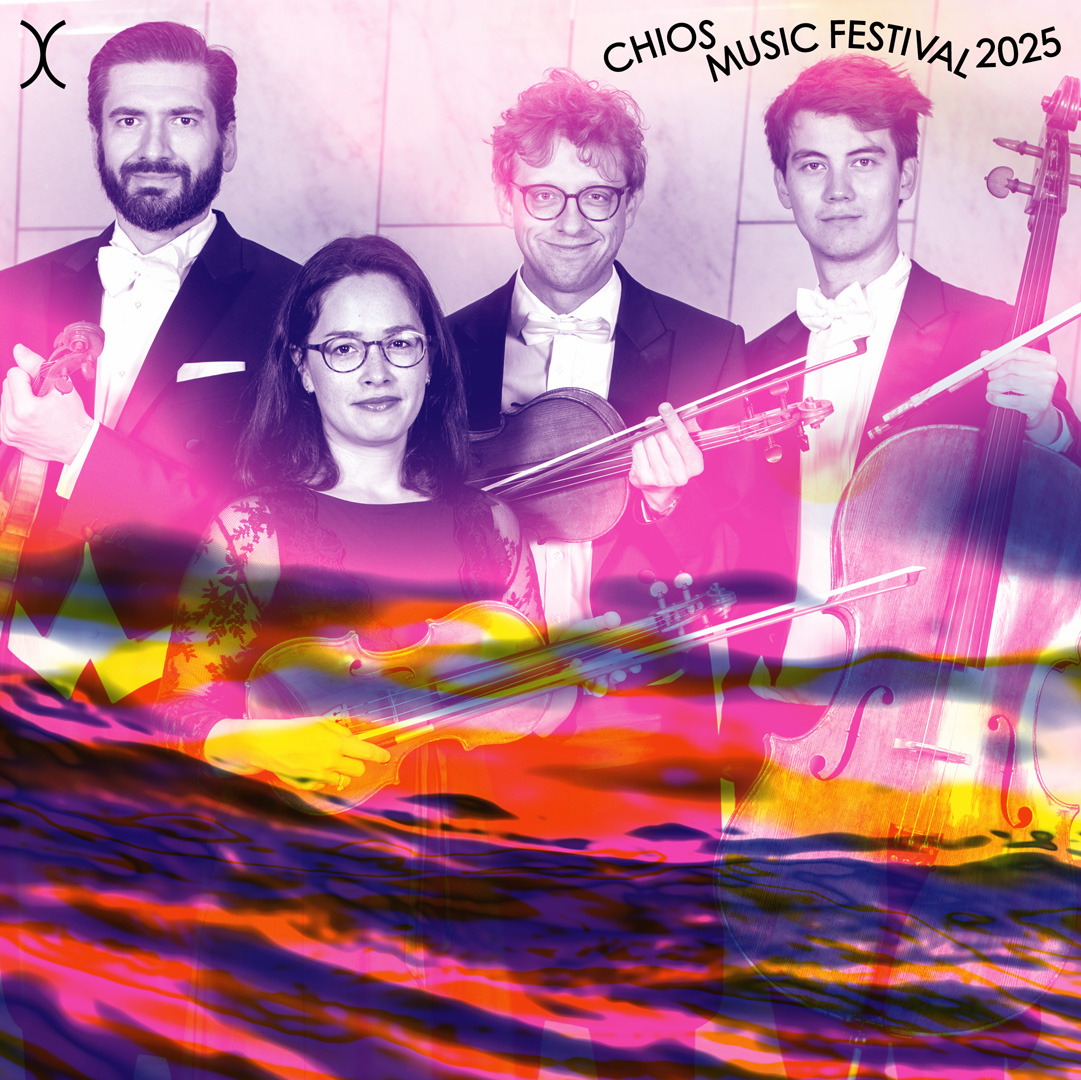

PHILHARMONIC STRING QUARTET
MUSICOLOGICAL NOTE
Wolfgang Amadeus Mozart (1756 -1791)
Divertimento in F major, KV 138
1) Allegro
2) Andante
3) Presto
Franz Schubert (1797-1828)
String quartet No. 14 in D minor, D 810 (“Death and the Maiden”)
1) Allegro
2) Andante con moto
3) Scherzo. Allegro molto
4) Presto
Antonin Dvorak (1841-1904)
String quartet No. 12, in F major, Op. 96 (“American”)
1) Allegro ma non troppo
2) Lento
3) Molto vivace
4) Finale. Vivace ma non troppo
Wolfgang Amadeus Mozart (1756 -1791)
Divertimento in F major, KV 138
The divertimenti for string quartet are Austrian composer Wolfgang Amadeus Mozart’s great contribution to the multi-movement genres of classical music. This particular divertimento was composed when he was only 16 years old and bears the marks of his admirable youthful creativity.
The cheerful and fast-paced first movement begins with its characteristic melodic theme in all instruments (in unison), but as it progresses, the intense and original harmonies capture the listener’s interest.
In the andante that follows, the violins interpret the lyrical melody; complicated and made more exciting by the rhythmic and harmonic pluralism of the viola and cello.
In the last movement, a joyful and short rondo, we can discern clear influences from Italian chamber music (Mozart had just returned to Salzburg from his second successful tour of Italy). The main melody, often interrupted by contrasting harmonic and rhythmic elements, returns triumphantly at the end of the work.
Franz Schubert (1797-1828)
String quartet No. 14 in D minor, D 810 (“Death and the Maiden”)
In 1822 the Austrian composer was found to be suffering from an incurable and, at the time, fatal disease. The famous string quartet (commonly known as “Death and the Maiden”) was composed in 1824 and, according to many scholars of his work, reflects his poor psychological state, knowing that he was nearing the end of his life. It is rightly regarded as one of the pillars of the chamber music repertoire and, with its intense dramatic tone, is a representative example of Schubert’s last period of composition. The quartet takes its name from the song “Der Tod und das Mädchen”, D 531, a setting of the homonymous poem by Matthias Claudius on the horror and redemption of death, which the composer had written seven years earlier.
The first (fast) movement, morphologically a two-part sonata, oscillates between major and minor modes. Intense melodic lines alternate with subtle lyrical moods, always accompanied by sudden outbursts.
The second (slow) movement, morphologically themed with variations, is based on the melodic theme of the song “Der Tod und das Mädchen”. Each of the five variations expresses a profoundly different emotion, and we constantly observe extreme shifts in dynamics and colour in general.
In the third movement, morphologically a classical minuet, the violin takes the melodic lead, with very interesting rhythmic contrapuntal from the other instruments. The lively and lyrical intermediate trio serves as a real respite from the exciting rhythm of the whole work.
The finale of the quartet, morphologically a rondo-sonata, is notable not only for its exaggerated speed and its reference to the Italian dance “Tarantella”, but also for its rich variety of melodic themes, colours and rhythmic consonances. Such extensive variations can be found in the string quartets of the late Romantic period. The work was first performed at a private concert in 1826 and published in 1831, three years after the composer’s death.
Antonin Dvorak (1841-1904)
String quartet No. 12, in F major, Op. 96 (“American”)
The famous Czech composer, who had just settled in the United States, wrote this string quartet in 1893, inspired mainly by Bohemian folk themes but also slightly influenced by the American rhythmic diversity. According to Jaroslav Holeček, a scholar of his work, this quartet reflects the happy and carefree moments he enjoyed in the beautiful countryside of the small town of Spillville (Iowa). It was first performed by the Kneisel Quartet in Boston on New Year’s Day 1894 and was a resounding success. Written in a homophonic style in which a melodic line is always prominent, it remains one of the most frequently performed concert works of chamber music.
The first (fast) movement, morphologically a two-part sonata, begins with a pentatonic melody in the viola (unusual for the period), which is eventually played by the first violin. The short development of the sonata has a denser harmonic processing and intense dramatic rhythmic elements.
The second (slow) part is dominated by an endless melancholic melody with few breaks in its flow. It is introduced by the first violin and then played by the cello. Some scholars discern echoes of negro spirituals in the lento.
The third movement has much in common with the scherzo of the New World Symphony. Two contrasting themes, in F major and F minor respectively, move within a single rhythmic setting. The first part is a bright melody with strong offbeats, while the second part is a lyrical variation of the melody.
The finale, a morphologically classical rondo, is dominated by a rhythmic ostinato reminiscent of Native American rhythms. The main melodic theme at the end triumphantly conveys the joyous atmosphere of the movement and the whole work